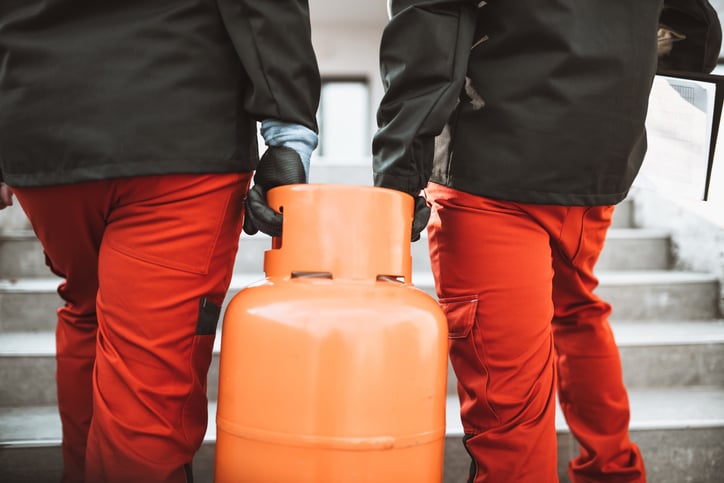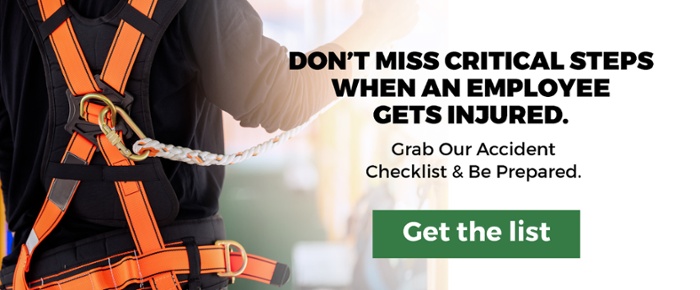
Would it surprise you to know that the Occupational Safety and Health Administration (OSHA) “does not have a standard which sets limits on how much a person may lift or carry” in the workplace?
While construction safety experts’ primary concern is to reduce the number of work-related injuries that occur each year across the entire labor landscape, heavy lifting accidents continue to account for a high percentage of injuries.
Work-related injuries
The OSHA definition of a work-related injury is as follows:
“You must consider an injury or illness to be work-related if an event or exposure in the work environment either caused or contributed to the resulting condition or significantly aggravated a pre-existing injury or illness. Work-relatedness is presumed for injuries and illnesses resulting from events or exposures occurring in the work environment unless an exception in §1904.5(b)(2) specifically applies.”
Work-related injuries can occur in any workplace, however benign, and can be caused by a multitude of factors, including:
-
Fatigue
-
Poor lighting
-
Heat/dehydration
-
Hazardous materials
-
Repeated motions/actions
-
Improper techniques
-
Heavy items/improper lifting
In fact, "lifting heavy items is one of the leading causes of injury in the workplace."
Heavy lifting injuries
The Bureau of Labor Statistics reported that over 36% of injuries involving missed workdays resulted from shoulder and back injuries. These can include:
-
Pulled muscles
-
Back sprains
-
Wrist injuries
-
Elbow injuries
-
Spinal injuries
Depending on the nature of the injury, workers may need to miss work for several days or months in order to recover properly and prevent a reoccurrence or aggravation of the injury. This is why construction safety is so important.
It should be noted that the National Institute for Occupational Safety and Health (NIOSH) has developed a mathematical model based on medical research that provides some guidelines for lifting. However, it is impossible to develop one single regulation for lifting, because other factors enter into how much each person may be able to lift safely. These include:
-
Frequency of lifting
-
Height of lifting
-
Origin of the lift (from the floor, waist, etc.)
-
Bending or twisting while lifting
-
Build/strength of the person lifting
-
Distance to the object being lifted
-
Length of time holding/lifting the object
Many factors may contribute to heavy lifting injuries, so it’s important to be proactive and follow the correct steps for lifting heavy objects.
correct lifting stages
Following are the approved stages for lifting heavy objects to prevent back injuries. Become familiar with each stage and practice them for good health and construction safety.
Preparation
Before lifting or carrying, pause a few moments and plan the lift. Consider how heavy/awkward the load is and the best/safest method for lifting it.
-
Is there a clear path?
-
Where are the best handholds?
-
What could increase my grip?
-
Am I physically able to lift this object?
-
Should I recruit help or use a lifting device?
Lifting
-
Get as close as possible to the object
-
Keep elbows and arms close to your body
-
Keep your back straight
-
Lift with the strength of your legs
Carrying
-
Do not twist or turn your body
-
Move feet as you turn
-
Keep the load close to your body
-
Follow the clearest direct path to your destination
Setting Down
-
Set down in the same way you picked up, but in reverse
-
Bend with the knees, not your hips or back
Tips for Lifting Safely
Remember these tips for lifting any size objects safely to prevent back injuries.
-
Use mechanical means for lifting when possible (hand trucks, pushcarts, etc.)
-
Minimize reaching to lift
-
It is easier and safer to push rather than pull objects
-
Implement rest breaks/rotations when frequently lifting heavy items
-
Always create a plan before the lift
Be sure your employees and team members know the proper techniques for lifting to minimize accidents and improve construction safety.


















